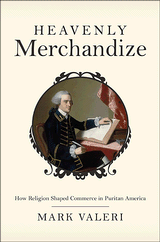New Series!
North American Religions
In recent years a cadre of industrious, imaginative, and highly intelligent scholars have focused their attention on North American Religions. The books and articles that they have produced have transformed the field. Scholars’ understanding of North Ameri- can Religions is far more subtle, expansive, and interdisciplinary than it was just a couple of decades ago.
North American Religions will build on this momentum. The series will focus primarily, but not exclusively, on religion in the United States in the twentieth and twenty- first centuries.
The editors of the series seek to cultivate books that explore a wide range of topics in intelligent and original ways. We welcome creative, adventuresome, and challenging books that are carefully researched and compellingly written. We wish to further scholarly conversation on such topics as lived religion, popular religious movements, representations of religion in the media, religion and social power, religion and cultural reproduction, religious and governmental institutions, and the relationship between secular and religious practices.
We are interested in working with scholars who start from the premise that religion itself matters even as they pay attention to the cultural, social, and political contexts of religious beliefs and practices. We are open to a wide range of methodologies, including ethnography, historical study, and the close reading of literary and other texts.
SUBMISSION REQUIREMENTS: The majority of books are anticipated to be single- or dual-authored. All works submitted for consideration must be broadly construed and critically engaged, ideally blending theory seamlessly within arguments and supporting interesting contentions with clear evidence. The “big picture” contribution of the work must be clear. Writing must be both accessible and engaging. We anticipate most authors will be situtated within religious studies or in closely related fields such as American studies, cultural studies, or cultural history. A proposal should be at least 6–10 pages in length and should include: A statement of the significance, need, and organization of the work. Its intended readership(s), including particular disciplines, any likely course adoption into specific types of common classes, any likely audience(s) outside the academy, and any relevant organizations/associations whose members may be interested in the work. A brief discussion of the closest 3–5 similar/competing works and how the proposed volume will distinguish itself. An annotated chapter outline with 1–2 paragraphs describing what each chapter will discuss. Ideally 2 or more sample chapters. An indication of the time line for completion and the anticipated length. Typical manuscripts should be roughly 80,000–90,000 words in total. A current copy of the author’s curriculum vitae.















